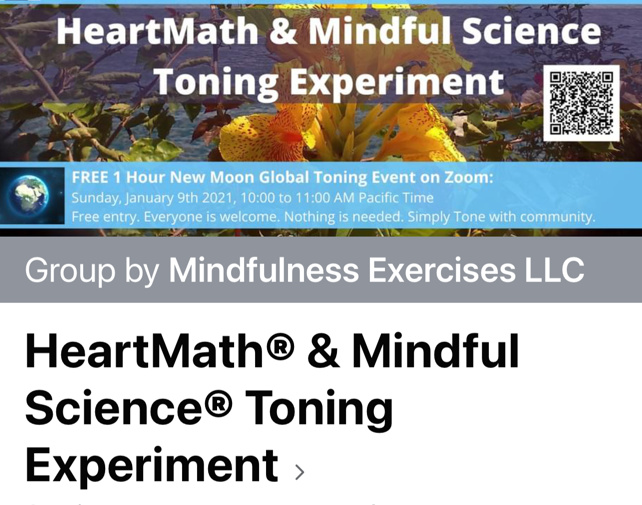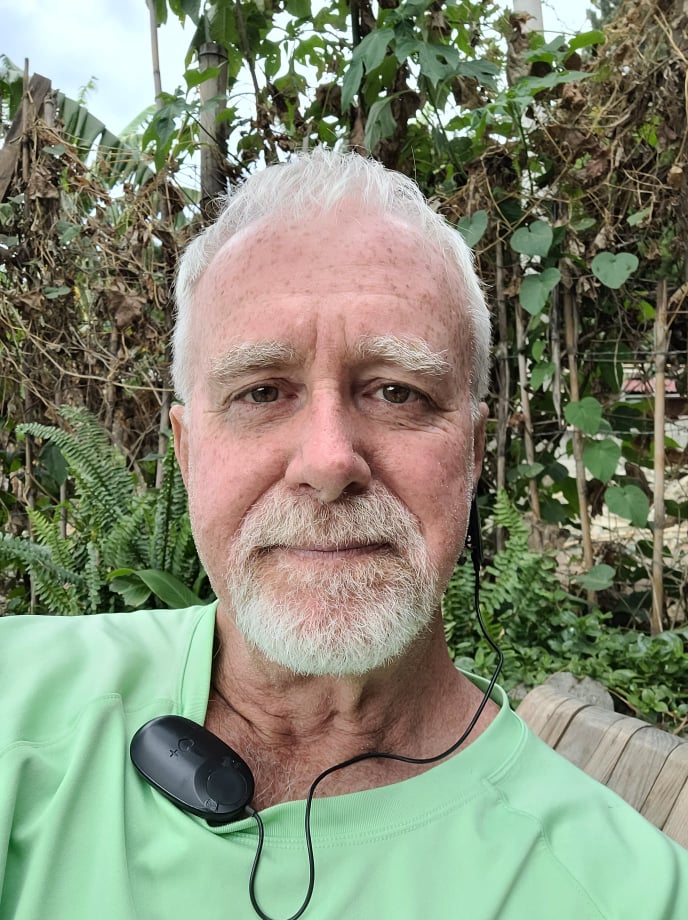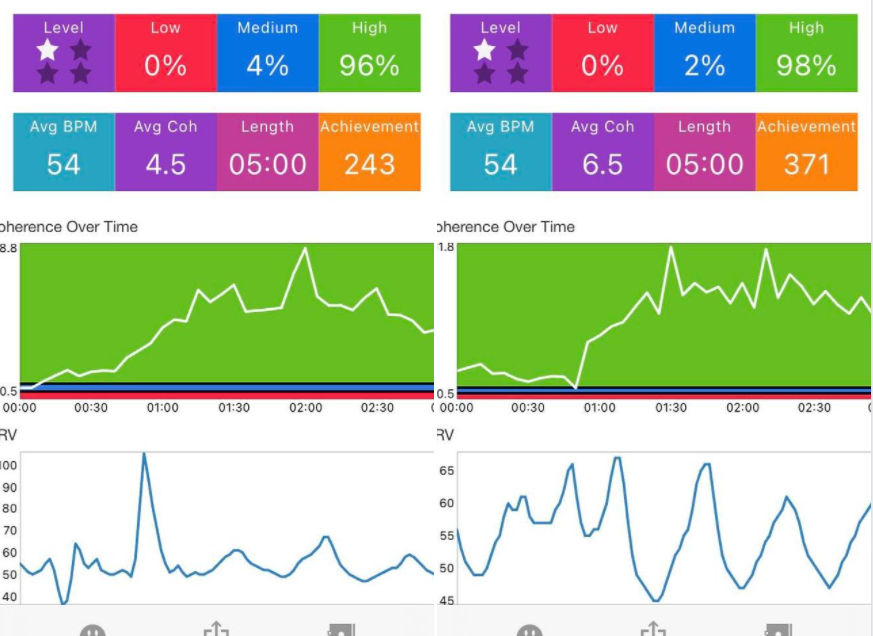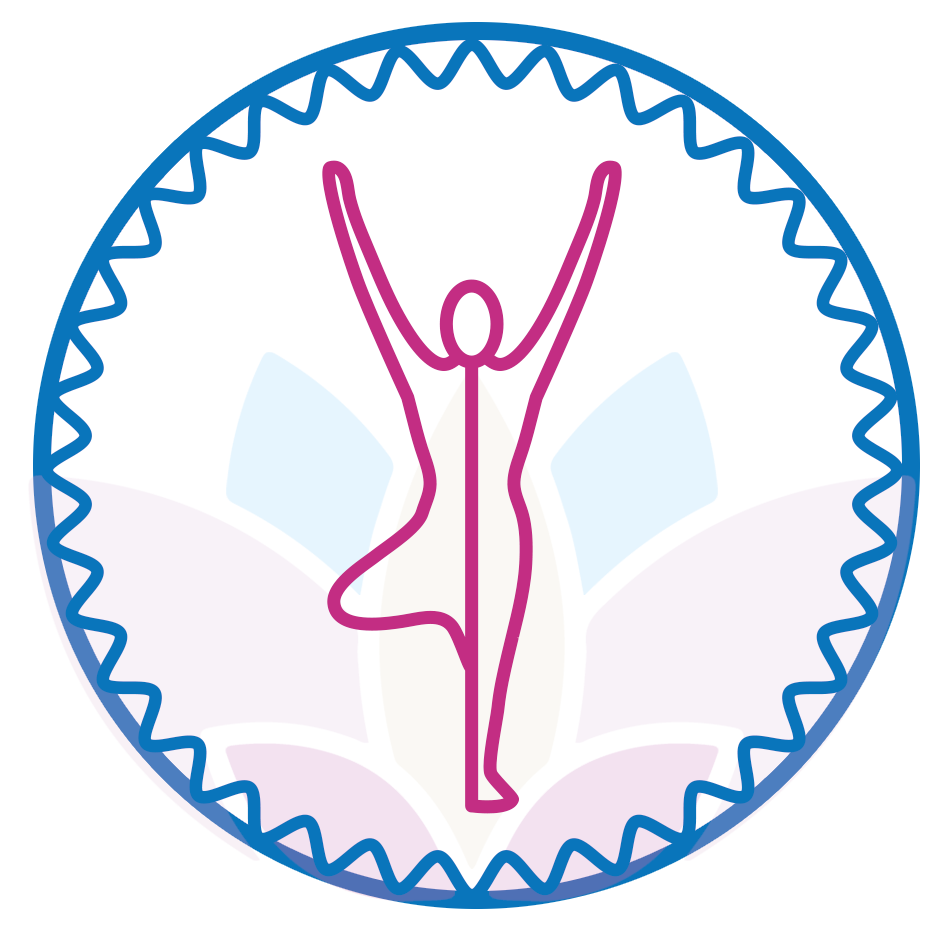
What is Toning and How Can It Improve Your Health?
Toning is nothing new. Many ancient healers understood that sound has healing properties. When retired corporate executive, then-68-year-old Eric Knouse discovered it, he was experimenting on himself using the HeartMath EMWave to get his mind and body in a state of physiological coherence. This was in 2008.
7 years later, when he moved to the jungle mountains of Guatemala and began practicing with the Inner Balance sensor, he came up with an accidental scientific discovery– that toning improved his levels of physiological coherence in just 20 minutes of practice daily.
As he became more and more intrigued by the information provided by the biofeedback tools and what the results meant as far as his “physiological markers of an open mind and heart,” he decided to expand his experiment to include others. It was from these mountaintop personal experiences that he decided to expand his offering through Mindful Science®, a company that, with the help of his son, has now become a premier online meditation platform in the Spanish language space.
From a research standpoint, Knouse (a citizen scientist) wanted to know if he could replicate the success he was having using his methods of achieving coherence with others. So he began to reach out to people, both in-person and online, and formed groups of “toners” who used the Inner Balance sensor to expand their mindfulness skills.

The Experiment and the Toning Group Grew and Grew
Knouse started teaching his toning practice to large groups. Simply put, the breath practice he taught involved sipping in breath during inhale, followed by the LONG SiGH® and making a vowel sound on the exhale while focusing attention on the sensations of the breath. Toning, Knouse told me in several interviews in 2021, was the equivalent of tuning up your inside while becoming more present. “In this moment of focused attention, there is no past, no future, only awareness of the infinite present moment,” he said. Without intention, it is just sound, but he added that the focused intention turned it into vibrational healing energy.
What Knouse was doing is not exactly new in spiritual circles, but he added BioFeedback. For thousands of years, Yogis and other spiritual seekers used patterns of sound or resonance to calm the mind and heal the body. Polyphonic overtone singing has long been associated with the mystical traditions of the world’s religions–from European medieval monk chants to Tuvan throat singing in Tibet. Unlike these ancient practices, Knouse’s “toning” did not require singing, harmonizing, or chanting skills. He pointed out that the only requirement was “intensely focused attention while making any tone.”
In the three years leading up to our inteview, Knouse had developed a following of more than 1400 citizen scientists who joined the Facebook group, the HeartMath & Mindful Science Toning. Of those members, 530 were using the Inner Balance, and more than 150 of them had contributed coherence data in their 28-day toning experimental groups. Knouse said he had been carefully collecting the coherence data using the HeartMath HeartCloud for both personal and publication purposes. Below is a graph of one of his toner’s typical results.

Toning seems to work for many of the participants
Jason Berger, a 2021 member who had been facing a serious illness, told me he had been toning daily for 1 year, for 5 minutes silent and 5 minutes with sound. He said while he does not necessarily feel differently during the session, his blood tests were telling a different story.
“I did a blood test to measure my cortisol levels and was literally off the charts, high! I began the HeartMath along with toning and repeated the same blood test and my levels were back in the normal range. I’m going to continue with my daily practice, even though I physically do not feel anything, my blood tells a different story and that’s what really counts!” Jason Berger
Other participants also shared their success stories:
“In the past, I have tried meditation. It was difficult. It was hard. Simply put… it wasn’t fun. Why do something that’s not fun? I would last one minute, maybe two, and lose interest. I could not see any gains. With HeartMath’s (Inner Balance), it’s fun. I can visually see the results. But more than that, I can feel the results. I feel calmer… dare I say, more spiritual. More compassion. I am staying in the present moment more often. And for a person who runs on anxiety and adrenaline, this is a major shift.” Christine Griffiths
“Introducing and practicing the method of Toning, through Mindful Science (HeartMath biofeedback) and studying our ancient ancestors in addition to many of today’s mindful practices, I awake each day to the intuitive guidance within me, which has been the shift that changed my life around.” Lori Herdegen Pascoe

Sound Experimentation
Knouse, who was not a scientist, did in fact, have a few hypotheses that he was testing during his experiments. (He did tell me that he did not carefully control all of the variables, however, one of his results was quite profound.) The following hypothesis was born out by the results.
Hypothesis: If one breaths asymmetrically making a sound on the exhale, then Heart rate Coherence scores will increase more than if breathing symmetrically with no sound.
The results of the study did bear this out as exhibited by the graph below. The purple line is one typical example of the aggregate toning coherence scores over time, while the green line represents data from silent symmetrical breathing coherence scores. One interesting note is that the pattern of the lines seems to become more synchronized as the subject’s practice. A possible explanation for this is that the improvement during toning had a carry-over effect to sessions without toning.

At the time of this interview, Knouse had completed 25 experiments comparing the effects of 5 minutes of silent symmetrical practice with 5 minutes of toned, asymmetrical breathing. Each of the cohorts included 18-30 subjects over 28-days.
Knouse believed firmly that his data leads to more questions and opens the door for more scientifically-based controlled research. His efforts were observed by Dr. Annette Deyhle, HeartMath’s research coordinator. Data recording and tech support were supported by Jackie Waterman, HeartMath’s medical technologist. While these findings are far from conclusive, Knouse was hopeful that the HeartMath® Institute would continue studying this phenomenon. In addition, Knouse believed toning is another tool for connecting HeartMath’s important coherence-building programs and their biofeedback tools to experienced meditators who understand that these ancient practices have a benefit for the mind, body, and heart.
Many people have been drawn to these practices for their ability to calm themselves, but have not understood the physiological effects on the heart and brain that longer exhales and sounds can have on resilience, heart rate, emotional regulation, and energy in a simple daily 10 minutes practice. Also, Knouse was excited about another benefit to toning. “They can get more people to dust off their Inner Balance if they have stopped using them because toning is novel and fun.”
We will miss you terribly Eric and continue to honor your legacy and work.
With heart,
Andrea B. Trank




This post was awesome. Glad to know I can tone with all the vowels or sounds. Loving getting deeper into this work.
Thank you so much Lauren. I am glad you found this article useful. I am sorry it took me so long to reply. For some reason, my notifications are not getting to me. X0X0
Andrea…great article!
As I explore deeper into the toning aspects of my expansion your article popped up (and my quote) and reflect to me how blessed I AM to have discovered this community. My data results over the period of focusing on toning have indicated I am rocking my coherence scores to flourishing heights. Eric has mentioned to me that at these levels, I am ‘purring’ along harmoniously with my mind, body and heart. This makes me happy.
Love, love, love the practice…and appreciate you for sharing! xxx
Thank you for your insights and for reading. Keep going with your toning practice.